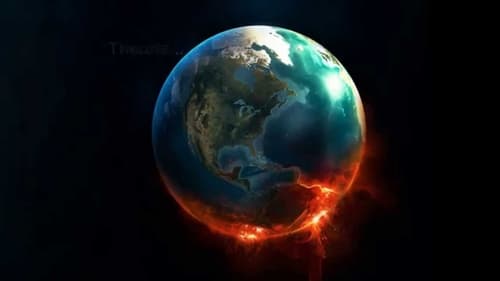
Executive Producer
Epic flooding, millions without power, numerous fatalities, gridlock and heartbreak; go inside the megastorm to learn why it happened and how one could hit again. This documentary is an in-depth one-hour special on the wrath and destruction of Hurricane Sandy.

Producer
Epic flooding, millions without power, numerous fatalities, gridlock and heartbreak; go inside the megastorm to learn why it happened and how one could hit again. This documentary is an in-depth one-hour special on the wrath and destruction of Hurricane Sandy.

Executive Producer
An investigation by Professor of Geological Sciences, Roger Bilham, of the science behind the earthquake and tsunami off the coast of Japan on March 11, 2011.

Executive Producer
Take a photographic journey thorough time from the violent birth of our planet four and a half billion years ago, through ice-ages, massive volcanic eruptions and the dinosaurs' reign to the first humans. For the first time, see the incredible story of our planet unfold in one single, seamless camera move.

Executive Producer
The sinking of the Titanic was far more than a simple accident. It was a tragedy that could have been prevented. It was the result of a long chain of mistakes: a fatal series of avoidable human errors that sent the Titanic and more than half of her passengers to their watery graves. Based around the official inquiry held immediately after the event, plus evidence that's come to light since the wreck of the Titanic was discovered in 1985, National Geographic, in this drama-documentary special, answers the question: Who Sank the Titanic?

Executive Producer
On April 10, 1912, the RMS Titanic embarked on its maiden voyage, sailing from Southampton, England, to New York City. One of the largest and most luxurious passenger liners at the time, the Titanic was also equipped with watertight compartments, which led many to consider the ship unsinkable; an anonymous deckhand famously claimed that “God himself could not sink this ship.” On April 14, however, the ship struck an iceberg, and early the next day it sank. Some 1,500 people perished.

Executive Producer
On the morning of August 27, 1883, the rumbling volcano of Krakatoa stood more than 6,000 feet high, with a diameter of approximately 10 miles. Later that day, this giant cone exploded so violently it was literally blown away. The effects of the volcanic explosion caused a tidal wave more than 140 feet high; one ship was carried more than two miles inland. Hail-sized stones fell as far as 100 miles away, and the city of Jakarta fell into total darkness. For many of the area's inhabitants, Armageddon had arrived. Over 36,000 people were killed immediately, and countries all over the globe were affected by the volcano's devastating after-effects.






